Today’s Current Affairs: 29th June 2024 for UPSC IAS exams, State PSC exams, SSC CGL, State SSC, RRB, Railways, Banking Exam & IBPS, etc
Table of Contents
Denmark Imposes The World’s First Carbon Tax On Livestock Emissions:

Denmark’s coalition government approved a plan to put in place the world’s first carbon emissions tax that targets farms.
- This is a big step for the country in its efforts to leave less of an impact on the environment, which are mostly driven by its strong pork and dairy production sectors.
- The tax will begin at 300 krone ($43) per tonne of CO2-equivalent emissions from animals in 2030 and rise to 750 krone ($107) by 2035.
- A 60% tax break will be given at first, bringing the actual charge down to 120 krone ($17) per tonne in 2030. It will then rise to 300 krone ($43) by 2035.
- This means that a typical Danish dairy cow that puts out about 5.6 tonnes of CO2 per year will have to pay a fee of 672 krone ($96) per year at first, rising to 1,680 krone ($241) by 2035.
- The Danish dairy business supports climate goals, but they have mixed feelings about the way taxes are being used.
- Some important people are worried about how the measures might affect competition and how well they work.
- Critics say the policy is too complicated and comes with a big risk that can’t be promised to work.
Pallikaranai Marshland : Protection

Tamil Nadu govt plans to build a high-level bridge to protect the Pallikaranai marshland.
- Pallikaranai Marshland is a freshwater marsh and partly saline wetland situated about 20 kilometres south of the city of Chennai, Tamil Nadu.
- It is one of the last remaining natural wetlands in Chennai city.
- It serves as an aquatic buffer of the flood-prone Chennai and Chengalpattu districts.
- It drains an area of 250 sq.km, encompassing 65 wetlands, through two outlets, viz., Okkiyam Madavu and the Kovalam Creek, and falls into the Bay of Bengal.
- On its eastern periphery, the Marsh is flanked by the Buckingham Canal.
- Parts of the Marsh are well below the mean sea level and qualify as low-lying basins.
- It is one of the Ramsar sites in India.
- The diverse ecosystem of the marshland supports some 115 bird species, ten mammals, 21 reptiles, ten amphibians, 46 fish, nine molluscs, five crustaceans, and seven butterfly species.
- These include notable species such as Russell’s viper(Daboia siamensis) and birds such as the glossy ibis (Plegadis falcinellus), grey-headed lapwings (Vanellus cinereus), and Pheasant-tailed jacana (Hydrophasianus chirurgus).
- Although tropical in bio-climate, the influence of the Bay of Bengal has been significant on the Marsh.
- Dramatic changes in its hydrology and biodiversity witnessed annually may be attributed to the maritime influence and the vagaries of the North East Monsoon.
Motor Neuron Diseases:
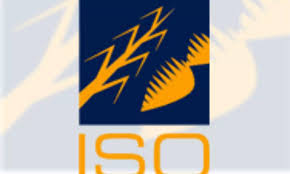
The annual conference on MND ‘Awareness, Care, and Management’ held at Nimhans, Bengaluru, stated that symptomatic and supportive treatments help manage the condition better.
- Motor Neuron Diseases (MNDs) are a group of progressive neurological disorders that destroy motor neurons, the cells that control skeletal muscle activity such as walking, breathing, speaking, and swallowing.
- Motor neurons are found in the brain and spinal cord, and they help tell your muscles what to do.
- MND can appear at any age, but the symptoms usually appear after the age of 50 years.
- Early signs of MND include weakness and slurred speech. This eventually leads to paralysis.
- It affects more males than females.
- The exact cause of MND is not known. Generally, MND is believed to be caused by a combination of environmental, lifestyle, and genetic factors.
- Most cases of MND develop without an obvious cause.
- Around 1 in 10 cases is ‘familial’, meaning the condition is inherited. This is due to a genetic mutation, or an error in the gene.
- This group includes diseases such as amyotrophic lateral sclerosis, progressive bulbar palsy, primary lateral sclerosis, progressive muscular atrophy, spinal muscular atrophy, Kennedy’s disease, and post-polio syndrome.
- The most common type of MND is amyotrophic lateral sclerosis (ALS).
- It affects both the upper and lower motor neurons—the neurons in the brain and spinal cord—which then affects the muscles of the arms, legs, mouth, and respiratory system.
- On average, people with ALS live for 3–5 yearsafter receiving the diagnosis, but with supportive care, some people live for 10 years or longer.
- There is no cure or standard treatment for the MNDs.
- Symptomatic and supportive treatment can help people be more comfortable while maintaining their quality of life.
Scheme For Partial Reimbursement Of Exploration Expenses For Holders Of Exploration Licences:
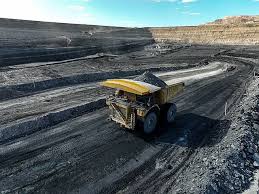
Scheme for Partial Reimbursement of Exploration Expenses for Holders of Exploration Licences
- The Ministry of Mines recently launched the Scheme for Partial Reimbursement of Exploration Expenses for Holders of Exploration Licences (EL) in a bid to accelerate mineral exploration and alleviate the high associated costs.
- It was launched by the Ministry of Mines to offer partial reimbursement of exploration expenses to licence holders.
- It offers a 50 percent reimbursement on expenses incurred during the exploration of critical minerals, with a maximum cap of Rs 20 crore.
- The maximum cap can be increased to Rs 24 crore if the EL holder hands over a G2 (general exploration) block for auction for the grant of a mining lease within three years from the execution of the exploration licence and it is successfully auctioned.
- The incentives for all selected licensees will be provided from the Rs 5,000 crore National Mineral Exploration Trust (NMET) fund.
- However, the EL holder must repay the amount received from the NMET within ten years, in equal annual installments, starting from the beginning of mineral production and the receipt of auction premium shares from any mining leases auctioned based on their exploration.
- If the EL holder receives a lump sum payment instead of annual premiums, they must repay the full amount to NMET within one month of receiving the lump sum payment.
- Though EL holders will have to return the money, there is no limit on the number of applications or the scheme’s outlay.
- The initiative is part of the National Mineral Exploration Policy (NMEP) of 2016, which aims to involve the private sector in mineral exploration by leveraging their expertise, technology, and financial resources.
- The exploration of critical and deep-seated minerals became possible after the 2023 amendment to the Mines and Minerals (Development and Regulation) Act, 1957 (MMDR Act).
- This amendment introduced a new mineral concession for the exploration of 29 critical and deep-seated minerals listed in the Seventh Schedule of the Act, aiming to encourage private sector participation.
- The scheme allows optional participation for EL holders granted licences through auction after the scheme’s introduction.
Steriphopus Wangala : New Spider Species
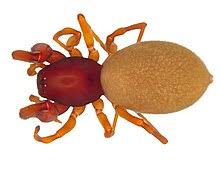
A new spider species named Steriphopus wangala has been discovered in Meghalaya.
- Steriphopus Wangala is a newly discovered species of spider from the West Garo Hills district of Meghalaya.
- It has been named after the Garo community’s harvest festival, the Wangala festival, or the 100 Drums Festival.
- This spider belongs to the Palp-Footed Spider family, characterized by their disproportionately powerful and heavily sclerotized first pair of legs.
- It has a characteristic reddish-brown colour.
- Wangala festival, also known as the 100 drums festival, is a popular festival among the Garos of Meghalaya.
- The Wangala Festival marks the end of the agricultural season. This is followed by thanking the spirits and deities for a bountiful harvest and seeking their blessings for the upcoming year.
- It is the occasion when the tribals offer sacrifices to please their main deity, Saljong, the Sun God.
- It also signifies the onset of winter.
NASA’s Juno Probe

New findings from NASA’s Juno probe provide a fuller picture of how widespread the lava lakes are on Jupiter’s moon Io.
- JUNO is an acronym for Jupiter Near-Polar Orbiter.
- It is a NASA spacecraft designed to orbit the planet Jupiter.
- Juno was launched by an Atlas V rocket from Cape Canaveral, Florida, on August 5, 2011.
- The Juno spacecraft initially embarked on a 5-year journey to the largest planet in our solar system, Jupiter.
- Main Goal is to earn more about Jupiter’s origins and how the planet has changed.
- Since it arrived at Jupiter in 2016, it has been probing beneath the dense, forbidding clouds encircling the giant planet – the first orbiter to peer so closely.
- Juno orbits Jupiter every 11 days in a highly elliptical orbit (4,400 by 2,700,000 km [2,700 by 1,700,000 miles]) over the planet’s poles.
- It is solar-powered.
- Though Juno’s primary mission wrapped in July 2021, it’s been granted an extended mission that’s expected to end in 2025.
- During the extended mission, Juno is exploring even more of the Jupiter system, including some of the planet’s most intriguing moons: Ganymede, Europa, and Io. Juno will also investigate Jupiter’s atmosphere and rings in greater detail.
Rhisotope Project:
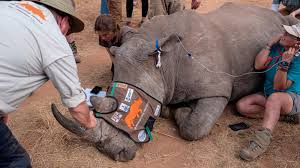
South African scientists injected radioactive material into live rhinoceros horns under the Rhisotope Project to curb poaching.
- Rhisotope Project was started in 2021 in South Africa.
- It aims to make the rhinoceros horns easier to detect at border posts and render them useless for human consumption.
- The project involves inserting two tiny radioactive chips into the horns of 20 rhinos.
- The low-dose radioactive material is designed to be detectable by radiation sensors at international borders without harming the animals or the environment.
- The radioactive material is expected to last five years on the horn, making it a more cost-effective solution than dehorning every 18 months.
- Additionally, the team sprayed 11,000 microdots on each treated horn for further identification.
- The team of scientists will take follow-up blood samples to ensure the rhinoceroses are effectively protected.
Microwave Obscurant Chaff Rocket:
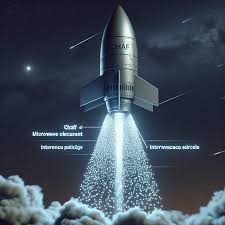
The Defence Research and Development Organisation (DRDO) handed over the Medium Range-Microwave Obscurant Chaff Rocket (MR-MOCR) to the Indian Navy at a ceremony held in New Delhi.
- Microwave Obscurant Chaff (MOC) is a niche technology developed by DRDO’s Defence Laboratory, Jodhpur
- It obscures radar signals and creates a microwave shield around platforms and assets, thus reducing radar detection.
- Special type of fibres, with diameter of a few micrometers and unique microwave obscuration properties, has been assembled in the medium range chaff rocket.
- When the rocket is fired it forms microwave obscurant cloud in space spreading over a sufficient area, with adequate persistence time, thus creating an effective shield against hostile threats having Radio Frequency seekers.
- DRDO has indigenously developed three variants of this critical technology namely Short Range Chaff Rocket (SRCR), Medium Range Chaff Rocket (MRCR) and Long Range Chaff Rocket (LRCR).
- The Phase-I trials of MR-MOCR were successfully conducted from Indian Navy ships, demonstrating the MOC cloud blooming and being persistent in space.
- In Phase-II trials, the Radar Cross Section (RCS) reduction of an aerial target to the extent of 90 per cent has been demonstrated and cleared by the Indian Navy.
Bhuvan Panchayat Geoportal 4.0:

Union Minister of State (Independent Charge) for Science and Technology will launch the two Geoportals namely Bhuvan Panchayat (Ver. 4.0) & National Database for Emergency Management (NDEM Ver. 5.0) on 28th June in New Delhi.
- Bhuvan Panchayat geoportal 4.0 is an online geospatial data and services dissemination platform to support integration and utilisation of space-based information into governance and research initiatives involving spatial planning up to Gram Panchayat level.
- Developed by this WebGIS platform developed by NRSC, ISRO.
- It enables visualisation, analysis, sharing of web map service (WMS) services of all thematic data products generated at 1:10k under the Space based Information Support for Decentralized Planning (SISDP) project.
- National Database for Emergency Management (NDEM) portal provides a comprehensive uniform, structured, multi-scale scale geospatial database for the entire country for situational assessment and effective decision-making during disasters/ emergency situations.
Raimona National Park:
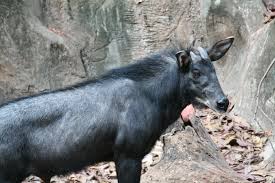
A team of scientists recorded a lone mainland serow (Capricornis sumatraensis thar) at 96 metres above the mean sea level in western Assam’s Raimona National Park.
- Raimona National Park is located in the state of Assam along the Indo-Bhutan border.
- The northern part of it shares the Indo-Bhutan international border with Phibsoo Wildlife Sanctuary in Bhutan.
- It is marked by the Sankosh River along with the inter-state boundary of West Bengal and Assam from the Indo-Bhutan border.
- Eastern part of Raimona National Park, the Saralbhanga River (also called Swrmanga) flows southward from Sarphang district of Bhutan.
Mainland Serow:
- It is a mammal that appears somewhere between a goat and an antelope.
- According to the International Union for Conservation of Nature, the mainland serow inhabits areas at altitudes of 200-3,000 metres.
- Conservation status
- IUCN: Vulnerable
- CITES : Appendix I
Regulations On Financial Influencers:

SEBI has barred regulated entities from making claims about investment returns, aiming to protect investors from misleading information.
- The regulator has also tightened criteria for stocks in the F&O market, requiring them to meet specific market value and trading volume thresholds.
- Fin-fluencers are individuals who use public social media platforms to share advice and personal experiences about money, investments, stocks, budgeting, property buying, cryptocurrency, and financial trends.
- The need for regulations arises due to the surge in unregistered investment advisors providing unsolicited stock tips on social media, alongside companies using influencers to manipulate share prices.
- This trend poses risks of fraud, digital data theft, and financial crises, impacting shareholder wealth, ethics, and corporate reputations.
Space MAITRI:
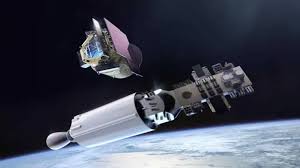
ISRO is set to launch the 450kg Optimus spacecraft, Australia’s largest designed and built spacecraft, on its Small Satellite Launch Vehicle (SSLV).
- This mission, named Space MAITRI (Mission for Australia-India’s Technology, Research, and Innovation), marks a significant collaboration between NewSpace India Limited (NSIL) and Australia’s Space Machines Company.
- The mission underscores the strategic partnership between India and Australia, focusing on sustainable space exploration and debris management.
- Space MAITRI aims to foster closer ties among commercial, institutional, and governmental space organizations from both countries in the space domain.
64th International Sugar Organization Council Meeting:
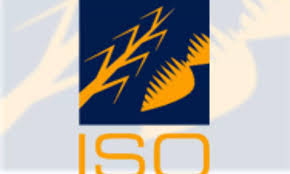
India is hosting the 64th International Sugar Organization (ISO) Council Meeting in June 2024 in New Delhi.
- A workshop titled “Sugar and Biofuels-Emerging Vistas” was organised in which international delegates, Indian sugar mill executives, industry associations, and technical experts participated.
- It discussed the future of the global sugar sector, biofuels, sustainability, and the role of farmers.
- India is the world’s largest consumer of sugar and the second-largest producer after Brazil.
- Sugarcane is the 2nd major feedstock for ethanol production (after corn) in the world.
- ISO is a United Nations (UN) affiliated body headquartered in London.
- It has about 85 member countries covering 90% of global sugar production and is mandated to bring major sugar-producing, consuming and trading nations together.
- Many member countries of ISO and Global Biofuel Alliance are common and this can be another forum to expand the alliance and promotion of biofuels.




